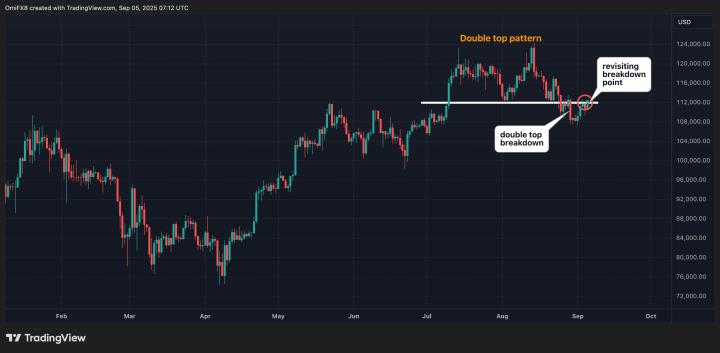Source: Cointelegraph Magazine, Translated by: imToken
Editor's Note: Ethereum is moving towards a new era of scaling to 10,000 TPS, with zero-knowledge proof (ZK) technology becoming a key driving force. This article will focus on the technical challenges of real-time proofs, the participation logic of Provers, security challenges during L1 switching, and how "native Rollup" will become the ultimate form of ZK scaling.
If ZK transformation is the starting point of Ethereum's technological reconstruction, then "real-time proving" and "native Rollup" are the core implementation stages of this scaling revolution.
In this article, we will continue to explore how to achieve 12-second ZK real-time proofs on the Ethereum mainnet, what the hardware threshold and incentive mechanism for becoming a Prover are, and how native Rollup will reshape the L2 landscape of Ethereum.
Real-Time Proving: A Key Puzzle of Ethereum Scaling
On Ethereum's roadmap to 10,000 TPS, there is an indispensable technological breakthrough: real-time proving.
Succinct co-founder Uma Roy explains: "Real-time proving refers to the ability to generate a ZK proof for an Ethereum mainnet block in less than 12 seconds".
What does this mean? Once real-time proving is achieved, Ethereum can incorporate its block verification logic into the protocol itself and almost "arbitrarily" increase the gas limit without sacrificing verifiability, thus achieving large-scale L1 expansion (Editor's note: The generation time of each block on the Ethereum mainnet is 12 seconds, so "real-time" means completing the proof within each block cycle).
However, achieving real-time proving requires more than just zkVM technology; it also needs changes to the Ethereum protocol layer.
Ladislaus from the Ethereum Foundation points out that a key mechanism - "decoupling block verification and immediate execution" - is expected to be introduced in next year's Glamsterdam upgrade, which will provide Provers with more ample time to generate zkEVM proofs within a complete slot, thus achieving truly real-time processing.
In terms of technical implementation, Succinct has released its latest SP1 Hypercube zkVM, which can generate proofs in real-time for 93% of 10,000 mainnet blocks in a cluster of 200 GPUs.
Roy says they are confident of raising this success rate to 99% by the end of this year. Although some hard-to-process blocks may still lead to a few blocks unable to generate proofs in time, the protocol design has considered fault-tolerance mechanisms, such as allowing skipping that block and continuing to process the next one.
Furthermore, Ethereum is considering shortening the block time from 12 seconds to 6 seconds (as another potential proposal for Glamsterdam), which will significantly improve user experience and transaction confirmation speed, but also adds extra pressure on ZK Provers - the difficulty of the task has doubled for provers.
However, Roy is not worried, as ZK technology's performance improves 10-fold each year, so even if the block time is halved, it can still cope.
In June, Linea also announced that 100% of on-chain activities on its network are covered by ZK proofs, though Linea's current TPS is only 2, which is not a performance limitation but constrained by usage demand.
It's worth noting that Linea's block interval is only 2 seconds, with ZK proofs uploaded to Ethereum L1 for validation through smart contracts. This model may be a precursor to the future mainnet's "ZK-ification".
Is the Hardware Threshold for Ethereum ZK Provers High?
To generate ZK proofs in real-time, powerful computing resources are naturally required.
The Ethereum Foundation's initial technical target for Provers is: hardware costs controlled within $100,000, power consumption below 10 kilowatts, approximately equivalent to the power consumption of a Tesla Powerwall home battery.
This number doesn't sound "lightweight". Ethereum critic Justin Bons (founder of Cyber Capital) called it "crazy hardware requirements far beyond Solana validator nodes", but this actually confuses two completely different roles.
Ladislaus from the Ethereum Foundation's protocol coordination team points out: Provers and Validators have different responsibilities and cannot be conflated - Validators run nodes and participate in consensus, while Provers' task is to generate ZK proofs. Once a transaction's ZK proof is correctly generated, the network only needs to verify if the proof is correct, without repeating the transaction.
Because of this, Ladislaus is optimistic, "As long as we can find an honest prover who meets the hardware conditions, Ethereum can continue to run safely. We deliberately set the threshold below data centers, and even if it's not a large institution or data center, as long as it's an individual developer with technical capabilities, they can run a Prover at home".
The current $100,000 hardware configuration is just an initial goal. Ethereum Foundation researcher Sophia Gold expects mainstream Provers to meet the standard by the Devconnect Argentina developer conference in November this year.
Succinct co-founder Roy predicts that by early next year, GPU requirements can be reduced to around 16 graphics cards, with total costs controlled between $10,000 and $30,000.
Meanwhile, Succinct has built a decentralized network of "hundreds of Provers" on the testnet, generating millions of proofs.
The core logic of this system is competitive proving, where all Provers participate in bidding, with one winner selected each round to execute the zk proof, aiming to let participants with shorter time and lower costs win, forming a computing power bidding mechanism.
This means that in the ZK-driven Ethereum future, the miner spirit will reappear in another form - only the role has changed from mining blocks to mining proofs.
Switching Mainnet to ZK Architecture: A High-Difficulty System Migration
Switching Ethereum L1 mainnet to a zero-knowledge proof (ZK) architecture is another technical challenge almost equivalent to the transition from Proof of Work (PoW) to Proof of Stake (PoS) in 2022. The entire process not only requires reconstructing the protocol layer but must also carefully consider various potential edge scenarios and security risks to prevent network interruption.
At an EthProofs conference in July this year, researcher Justin Drake mentioned several potential risk concerns. For example, malicious attackers might insert "prover killers" into blocks, causing the entire network verification mechanism to fail; or network activity might drop sharply, with transaction fees insufficient to cover the cost of generating ZK proofs, thus affecting network sustainability.
Ladislaus from the Ethereum Foundation's protocol coordination team says the entire transition process might take several years, especially focusing on security risks. The ZK virtual machine (zkVM), as a complex technology still in its early stages, is highly likely to have various vulnerabilities. However, as the ecosystem matures, we can gradually improve its feasibility and robustness on Ethereum L1 through introducing proof diversity, improving incentive mechanisms, and formal verification.
At the same time, Ethereum plans to fundamentally restructure its consensus layer by building a new structure called "Beam Chain", designed to be ZK-optimization friendly from the start. Drake even suggests that in the future, all of Ethereum's data validation work could be completed on a CPU of an ordinary laptop.
Mainnet "Snarkification": Native Rollup is Coming
While integrating zkEVM into the Ethereum mainnet, another long-term vision is gradually emerging: Native Rollup.
Current Rollups (whether Optimistic or ZK types) use independent proof systems, with their security depending on their own validator or sequencer mechanisms, creating certain trust assumptions with the Ethereum mainnet.
The vision of "Native Rollup" is completely different - by integrating zkEVM into the mainnet, allowing ETH L1 validators to directly verify the Rollup's state transition proof, thereby achieving a true L2 verified and secured by the mainnet.
This requires adding a key code segment "execute precompile" in the ETH L1 client, allowing validators to directly verify the ZK state transition proof generated by L2, as Ethereum Foundation protocol coordinator Ladislaus said, "L1 validators will consume these Rollup execution proofs and verify their correctness".
In other words, if Native Rollup becomes a reality, in the future, whether a transaction occurs on L1 or on a Native Rollup, its final settlement and security will be guaranteed by the same group of ETH validators, with the trust level being completely equivalent.
This means that depositing $10 million on a Native Rollup will have the same security as directly depositing on the ETH mainnet.
Declan Fox, head of the Linea project, stated that their long-term goal is to become a Native Rollup, which he believes is an "upgraded version" of ETH 2.0 sharding - no longer rigidly running 64 structurally identical shard chains, but building a heterogeneous Rollup system in a highly programmable and customizable way to serve different scenarios and user needs.
Unlike the homogeneous shard architecture of past ETH 2.0, Native Rollup can be heterogeneous, providing more diverse and differentiated application experiences for end users.
Although Native Rollup has not yet been formally written into the Ethereum roadmap, with the official launch of zkEVM and gradual reconstruction of the L1 architecture, pre-setting interfaces and precompile logic has obviously become a foreseeable technical trend.
Ladislaus summarized, "In terms of EVM Snarkification (i.e., integrating ZK proof capabilities) and advancing Native Rollup, Ethereum has a high degree of technical synergy because they share the underlying ZK technology stack", of course, this process still needs to go through Ethereum community governance, form an EIP (Ethereum Improvement Proposal), and ultimately be deployed in a hard fork.
Optimistically, if everything goes smoothly, an EIP might be submitted by the end of the year and launched in the fork after the Glamsterdam upgrade.
However, this timeline still has high uncertainty and should be viewed cautiously.







